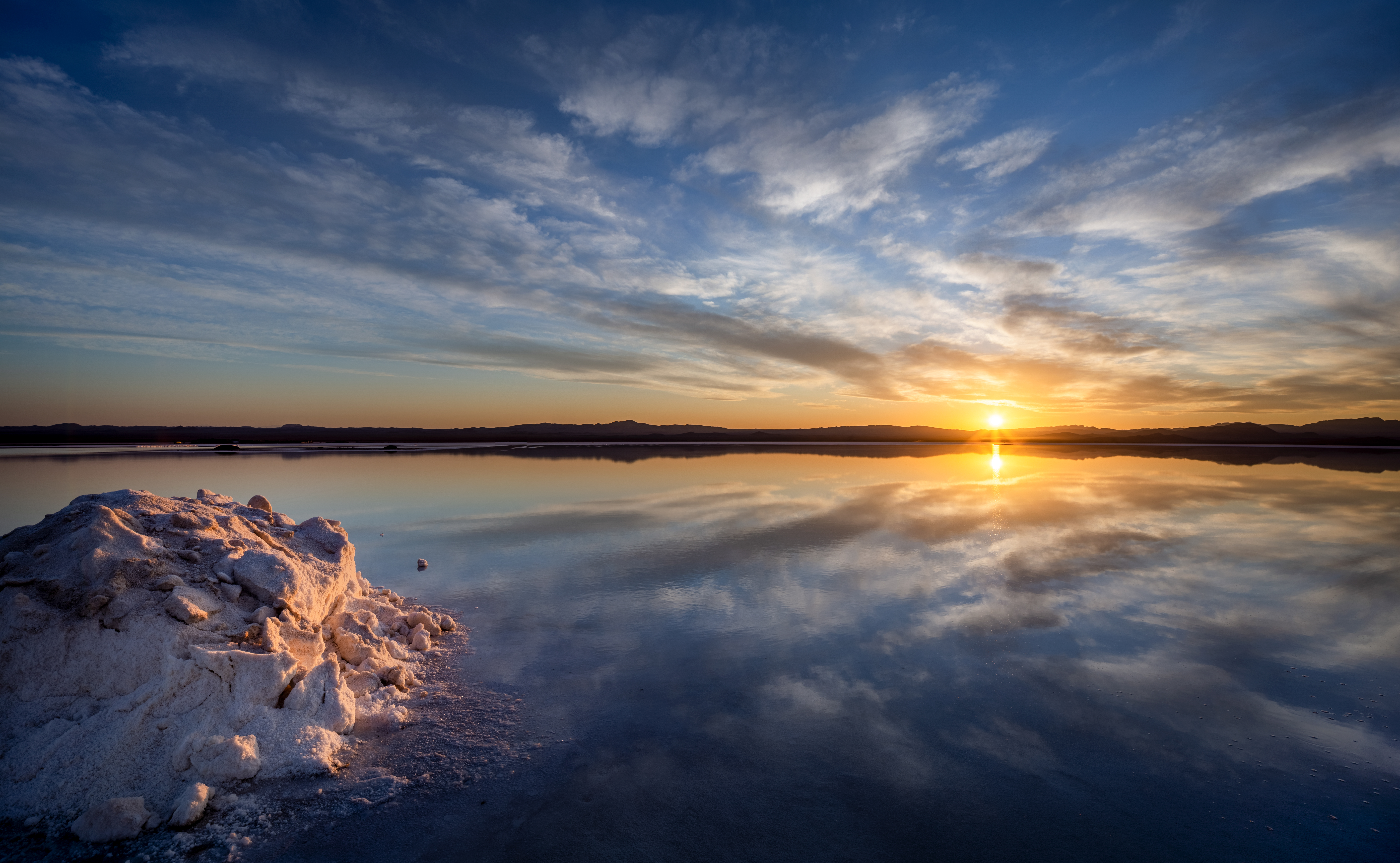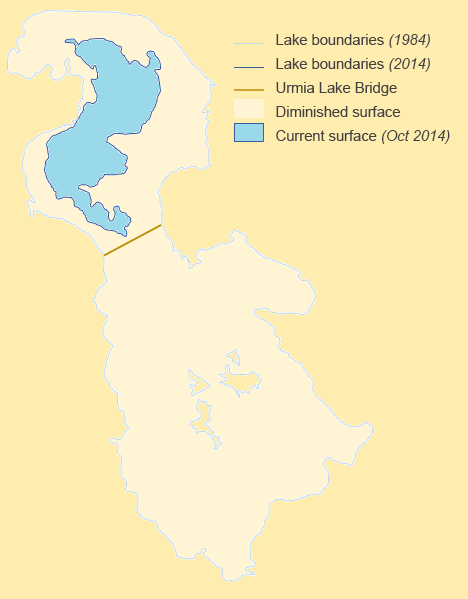|
Oroumieh
Urmia or Orumiyeh ( fa, ارومیه, Variously transliterated as ''Oroumieh'', ''Oroumiyeh'', ''Orūmīyeh'' and ''Urūmiyeh''.) is the largest city in West Azerbaijan Province of Iran and the capital of Urmia County. It is situated at an altitude of above sea level, and is located along the Shahar River on the Urmia Plain. Lake Urmia, one of the world's largest salt lakes, lies to the east of the city, and the mountainous Turkish border area lies to the west. Urmia is the 10th-most populous city in Iran. At the 2012 census, its population was 667,499, with 197,749 households. The majority of the city's residents are Azerbaijanis, with a large minority of Kurds, and a smaller number of Assyrians, and Armenians, as well as Persian-speakers who moved to the city mostly for employment. The city is the trading center for a fertile agricultural region where fruits (especially apples and grapes) and tobacco are grown. Even though the majority of the residents of Urmia ... [...More Info...] [...Related Items...] OR: [Wikipedia] [Google] [Baidu] |
Jameh Mosque Of Urmia
The Jāme Mosque of Urmia ( fa, مسجد جامع ارومیه – ''Masjid-e-Jāmeh Orumieh'') also known as, Rezayieh Mosque ( fa, links=no, مسجد رضائیه , ''Masjid-e-Rezayieh''), is the grand, congregational mosque ( Jāme) of Urmia, Iran. The mosque is situated in the older part of the city and was constructed in 13th century during the Ilkhanate era. Gallery File:Urmiya Cümə məscidinin planı-001.jpg, Plan of the building. File:Jame mosque-Urmia (2).JPG File:Jāme Mosque of Urmia 13960108 01.jpg File:Jāme Mosque of Urmia 13960108 09.jpg File:Jāme Mosque of Urmia 13960108 17.jpg File:Jāme Mosque of Urmia 13960108 23.jpg File:Jāme Mosque of Urmia 13960108 15.jpg File:منبر چوبی کار شده.jpg See also *Holiest sites in Shia Islam References External links The pictures of Jameh Mosque of Urmia Mosques in Iran Buildings and structures in Urmia 13th-century mosques Mosque buildings with domes Urmia Urmia or Orumiyeh ( fa, ارومی ... [...More Info...] [...Related Items...] OR: [Wikipedia] [Google] [Baidu] |
Iran Daylight Time
Iran Standard Time (IRST) or Iran Time (IT) is the time zone used in Iran. Iran uses a UTC offset UTC+03:30. IRST is defined by the 52.5 degrees east meridian, the same meridian which defines the Iranian calendar and is the official meridian of Iran. Between 2005 and 2008, by decree of President Mahmoud Ahmadinejad, Iran did not observe daylight saving time (DST) (called ''Iran Daylight Time'' or ''IRDT''). It was reintroduced from 21 March 2008. On 21 September 2022, Iran abolished DST and now observes standard time year-round. Daylight Saving Time transitions The dates of DST transitions in Iran were based on the Solar Hijri calendar, the official calendar of Iran, which is in turn based on the March equinox (Nowruz) as determined by astronomical calculation at the meridian for Iran Standard Time (52.5°E or GMT+3.5h). This resulted in the unique situation wherein the dates of DST transitions didn't fall on the same weekday each year as they do in most other countries. DST st ... [...More Info...] [...Related Items...] OR: [Wikipedia] [Google] [Baidu] |
Persian Language
Persian (), also known by its endonym Farsi (, ', ), is a Western Iranian language belonging to the Iranian branch of the Indo-Iranian subdivision of the Indo-European languages. Persian is a pluricentric language predominantly spoken and used officially within Iran, Afghanistan, and Tajikistan in three mutually intelligible standard varieties, namely Iranian Persian (officially known as ''Persian''), Dari Persian (officially known as ''Dari'' since 1964) and Tajiki Persian (officially known as ''Tajik'' since 1999).Siddikzoda, S. "Tajik Language: Farsi or not Farsi?" in ''Media Insight Central Asia #27'', August 2002. It is also spoken natively in the Tajik variety by a significant population within Uzbekistan, as well as within other regions with a Persianate history in the cultural sphere of Greater Iran. It is written officially within Iran and Afghanistan in the Persian alphabet, a derivation of the Arabic script, and within Tajikistan in the Tajik alphabet, a der ... [...More Info...] [...Related Items...] OR: [Wikipedia] [Google] [Baidu] |
Armenians
Armenians ( hy, հայեր, ''hayer'' ) are an ethnic group native to the Armenian highlands of Western Asia. Armenians constitute the main population of Armenia and the ''de facto'' independent Artsakh. There is a wide-ranging diaspora of around five million people of full or partial Armenian ancestry living outside modern Armenia. The largest Armenian populations today exist in Russia, the United States, France, Georgia, Iran, Germany, Ukraine, Lebanon, Brazil, and Syria. With the exceptions of Iran and the former Soviet states, the present-day Armenian diaspora was formed mainly as a result of the Armenian genocide. Richard G. Hovannisian, ''The Armenian people from ancient to modern times: the fifteenth century to the twentieth century'', Volume 2, p. 421, Palgrave Macmillan, 1997. Armenian is an Indo-European language. It has two mutually intelligible spoken and written forms: Eastern Armenian, today spoken mainly in Armenia, Artsakh, Iran, and the former Soviet ... [...More Info...] [...Related Items...] OR: [Wikipedia] [Google] [Baidu] |
Kurds
ug:كۇردلار Kurds ( ku, کورد ,Kurd, italic=yes, rtl=yes) or Kurdish people are an Iranian ethnic group native to the mountainous region of Kurdistan in Western Asia, which spans southeastern Turkey, northwestern Iran, northern Iraq, and northern Syria. There are exclaves of Kurds in Central Anatolia, Khorasan, and the Caucasus, as well as significant Kurdish diaspora communities in the cities of western Turkey (in particular Istanbul) and Western Europe (primarily in Germany). The Kurdish population is estimated to be between 30 and 45 million. Kurds speak the Kurdish languages and the Zaza–Gorani languages, which belong to the Western Iranian branch of the Iranian languages. After World War I and the defeat of the Ottoman Empire, the victorious Western allies made provision for a Kurdish state in the 1920 Treaty of Sèvres. However, that promise was broken three years later, when the Treaty of Lausanne set the boundaries of modern Turkey and made no s ... [...More Info...] [...Related Items...] OR: [Wikipedia] [Google] [Baidu] |
Azerbaijanis
Azerbaijanis (; az, Azərbaycanlılar, ), Azeris ( az, Azərilər, ), or Azerbaijani Turks ( az, Azərbaycan Türkləri, ) are a Turkic people living mainly in northwestern Iran and the Republic of Azerbaijan. They are the second-most numerous ethnic group among the Turkic-speaking peoples after Turkish people and are predominantly Shia Muslims. They comprise the largest ethnic group in the Republic of Azerbaijan and the second-largest ethnic group in neighboring Iran and Georgia. They speak the Azerbaijani language, belonging to the Oghuz branch of the Turkic languages and carry a mixed heritage of Caucasian, "The Albanians in the eastern plain leading down to the Caspian Sea mixed with the Turkish population and eventually became Muslims." "...while the eastern Transcaucasian countryside was home to a very large Turkic-speaking Muslim population. The Russians referred to them as Tartars, but we now consider them Azerbaijanis, a distinct people with their own language and c ... [...More Info...] [...Related Items...] OR: [Wikipedia] [Google] [Baidu] |
List Of Iran Cities By Population
IR IRAN has one of the highest urban population growth rates in the world. From 1950 to 2002, the urban proportion of the population increased from 27% to 60%. The United Nations predicts that by 2030 80% of the population will live in urban areas."Islamic Azad University" retrieved 28 Jan 2008 Most internal migrants have settled near the cities of , , |
Turkey
Turkey ( tr, Türkiye ), officially the Republic of Türkiye ( tr, Türkiye Cumhuriyeti, links=no ), is a list of transcontinental countries, transcontinental country located mainly on the Anatolia, Anatolian Peninsula in Western Asia, with a East Thrace, small portion on the Balkans, Balkan Peninsula in Southeast Europe. It shares borders with the Black Sea to the north; Georgia (country), Georgia to the northeast; Armenia, Azerbaijan, and Iran to the east; Iraq to the southeast; Syria and the Mediterranean Sea to the south; the Aegean Sea to the west; and Greece and Bulgaria to the northwest. Cyprus is located off the south coast. Turkish people, Turks form the vast majority of the nation's population and Kurds are the largest minority. Ankara is Turkey's capital, while Istanbul is its list of largest cities and towns in Turkey, largest city and financial centre. One of the world's earliest permanently Settler, settled regions, present-day Turkey was home to important Neol ... [...More Info...] [...Related Items...] OR: [Wikipedia] [Google] [Baidu] |
Salt Lake
A salt lake or saline lake is a landlocked body of water that has a concentration of salts (typically sodium chloride) and other dissolved minerals significantly higher than most lakes (often defined as at least three grams of salt per litre). In some cases, salt lakes have a higher concentration of salt than sea water; such lakes can also be termed hypersaline lakes, and may also be pink lakes on account of their colour. An alkalic salt lake that has a high content of carbonate is sometimes termed a soda lake. One saline lake classification differentiates between: *subsaline: 0.5–3‰ (0.05-0.3%) *hyposaline: 3–20‰ (0.3-2%) *mesosaline: 20–50‰ (2-5%) *hypersaline: greater than 50‰ (5%) Properties Salt lakes form when the water flowing into the lake, containing salt or minerals, cannot leave because the lake is endorheic (terminal). The water then evaporates, leaving behind any dissolved salts and thus increasing its salinity, making a salt lake an excellent place ... [...More Info...] [...Related Items...] OR: [Wikipedia] [Google] [Baidu] |
Lake Urmia
Lake Urmia; az, اۇرمۇ گؤلۆ, script=Arab, italic=no, Urmu gölü; ku, گۆلائوو رمیەیێ, Gola Ûrmiyeyê; hy, Ուրմիա լիճ, Urmia lich; arc, ܝܡܬܐ ܕܐܘܪܡܝܐ is an endorheic salt lake in Iran. The lake is located between the provinces of East Azerbaijan and West Azerbaijan in Iran, and west of the southern portion of the Caspian Sea. At its greatest extent, it was the largest lake in the Middle East and the sixth-largest saltwater lake on Earth, with a surface area of approximately , a length of , a width of , and a maximum depth of . By late 2017, the lake had shrunk to 10% of its former size (and 1/60 of water volume in 1998) due to persistent general drought in Iran, but also the damming of the local rivers that flow into it, and the pumping of groundwater from the surrounding area. This dry spell was broken in 2019 and the lake is now filling up once again, due to both increased rain and water diversion from the Zab River by the Lake ... [...More Info...] [...Related Items...] OR: [Wikipedia] [Google] [Baidu] |
Urmia Plain
Urmia Plain (Persian: جلگه ارومیه, Azerbaijani: Urmu düzü) is a region in the West Azerbaijan Province of Iran. It lies between Lake Urmia to the east, and the Turkish border to the west. It contains the city of Urmia. The inhabitants of the Urmia Plain are Azerbaijani people and Kurds with a minority of Assyrian and Armenians Armenians ( hy, հայեր, ''hayer'' ) are an ethnic group native to the Armenian highlands of Western Asia. Armenians constitute the main population of Armenia and the ''de facto'' independent Artsakh. There is a wide-ranging diaspora .... See also * Nineveh Plains References {{DEFAULTSORT:Urmia Plain Plains of Iran Landforms of West Azerbaijan Province Assyrian geography ... [...More Info...] [...Related Items...] OR: [Wikipedia] [Google] [Baidu] |


.jpg)

